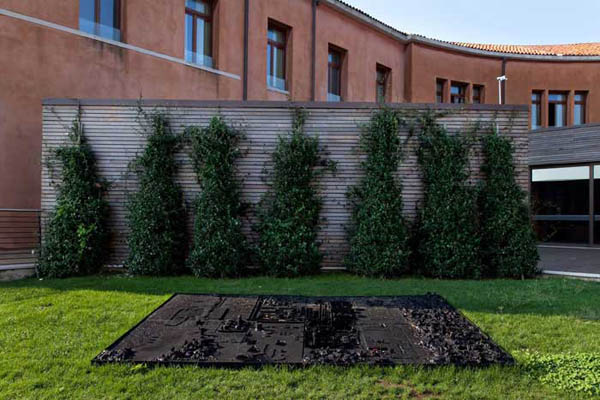
BOLOGNA ACADEMY OF FINE ARTS – FABIO ROMANO
1) A view that becomes a vision. Or vice versa. And an organic object that becomes a find.
2) In the case of landscapes the decision is taken by the observer, in the case of archaeologies, by someone who feels.
... there remains the fact that the ambivalence in the works of Fabio Romano and his indiscriminate use of the media generate a series of possible views of the eye and the mind, focussed on the same subject, as in an oriental game.
3) Elevations. And plans. Horizontal and vertical planes. Static images, moving images.
4) Initially some of his plastic notes and fragments seem to seek a possible relationship with classical sculpture, certainly the viewpoint, vertical and erect, where you have to walk around it, as Giulio Carlo Argan insisted in his manuals; but it is only an illusion, because they do not possess that necessary gravity (considering the materials used, polyurethane foam) that requires you to perform the Argan ritual.
5) Instead his plastic models, which do not yet have to be looked at in a precise way and seem more like observing objects that ones to be observed, silently draw our gaze towards industrial archaeological features and lead us - through colours and accumulated sediments of powder and pigments - to discoveries in which we can appreciate the catastrophe wrought by nature or, to the same extent, by the hand of man.
6) With intents that developed after and independently of their construction, which perhaps started just as a game, and considering the plastic models as real stage sets, Romano often simulates atmospheric and geological events, on an uncertain scale that is never defined, filming the event with digital micro cameras and producing short videos…
...or with more contemplative and reflective dynamics he reformats the entire research according to the idea of the landscape, seeking the possibility of translating into a view-painter’s image, almost a panorama, the infinite opportunities offered by these huge maquettes which were sculptures by intent and origin, allowing the eye to scan them slowly through the macro lens, returning with new views or visions of an almost disconcerting immobility.
Text by Luca Caccioni